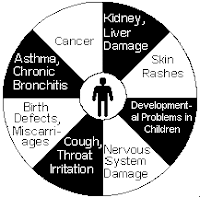Setting Priorities for Health Programs
Setting sound program priorities for health promotion depends on objectively constructed descriptions of prevailing health problems and how they manifest in the target population. To select one problem from several, the following questions should be answered :
 |
| Health Problems |
1. Which problem has the greatest impact in terms of death, disease, days lost from work, rehabilitation costs, disability (temporary and permanent), family disorganization, and cost to communities and agencies for damege repair or loss and cost recovery?
2. Are certain subpopulations, such as children, mothers, blacks, or Hispanics, at special risk?
3. Which problems are most susceptible to intervention?
4. Which problem is not being addressed by other agencies in the community? Is there a need that is being neglected?
5. Which problem, when appropriately addressed, has the greatest potential for an attractive yield in improved health status, economic savings, or other benefits?
6. Are any of the health problems highly ranked as a regional or national priority? (State health agencies are developing priorities among health problems, often based on local epidemiologic data).
Elaborating on the scope and impact of the health problems helps the planner get a clear focus on the problems of the target population and its subgroups. With sufficiently detailed information, the process can also help in selecting the strategies to be used and deciding whether a program is to be preventive, curative, rehabilitative, or some combination thereof. Consider the complex problem of motor vehicle injuries.
Prevention efforts might consist of trying to reduce drunken driving, increasing the use of seat belts in combination with consistent enforcement of a 55-mile-per-hour speed limit, or employing strategies to improve road makings and conditions in areas where crashes are most common. The emphasis of a curative program might be on immediate emergency medical services (including transportation of injury victims to the appropriate facility).
A rehabilitative effort might deal with disabilities resulting from injuries, thereby increasing the number of victims who regain productive lives and the speed with which they do so. Epidemiologic information provides insights on which facet or facets of the problem will (or will not) yield to intervention and on which focus - preventive, curative, or rehabilitative - should predominate.
Reference :
L. W. Green and M. W. Kreuter., Health Promotion Planning an Educational and Environmental Approach, Mayfield Publishing Company, Mountain View, 1991.

